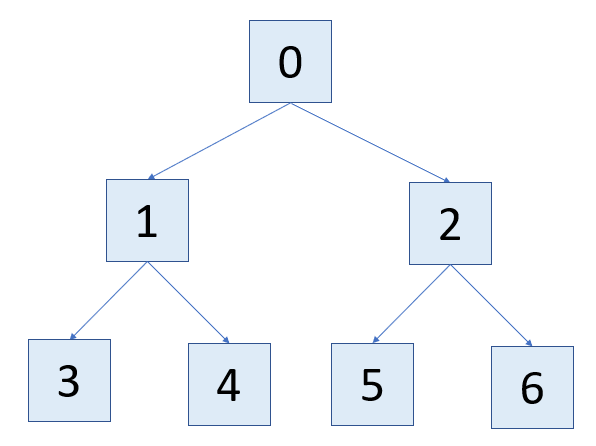I've trained a XGBoost model for regression, where the max depth is 2.
# Create the ensemble
ensemble_size = 200
ensemble = xgb.XGBRegressor(n_estimators=ensemble_size, n_jobs=4, max_depth=2, learning_rate=0.1,
objective='reg:squarederror')
ensemble.fit(train_x, train_y)
I've plotted the first tree in the ensemble:
# Plot single tree
plot_tree(ensemble, rankdir='LR')
Now I retrieve the leaf indices of the first training sample in the XGBoost ensemble model:
ensemble.apply(train_x[:1]) # leaf indices in all 200 base learner trees
array([[6, 6, 4, 6, 4, 6, 5, 5, 4, 5, 4, 3, 5, 4, 5, 3, 6, 3, 5, 5, 3, 3, 3, 5, 4, 4, 3, 4, 3, 6, 6, 6, 4, 6, 6, 3, 5, 3, 5, 4, 6, 4, 4, 6, 3, 3, 6, 3, 6, 3, 4, 3, 6, 6, 3, 6, 5, 3, 6, 6, 3, 4, 6, 5, 3, 3, 3, 6, 3, 4, 3, 6, 3, 6, 3, 3, 3, 4, 6, 3, 4, 4, 6, 3, 3, 6, 3, 6, 6, 3, 3, 4, 4, 4, 3, 3, 6, 6, 3, 3, 6, 3, 3, 3, 6, 6, 6, 4, 4, 3, 5, 3, 3, 3, 4, 5, 3, 3, 6, 3, 3, 6, 3, 4, 5, 3, 6, 3, 5, 3, 4, 4, 3, 3, 4, 6, 6, 6, 6, 3, 4, 4, 3, 5, 6, 6, 3, 5, 3, 3, 6, 6, 3, 3, 6, 3, 3, 4, 4, 3, 4, 3, 5, 3, 3, 3, 3, 3, 4, 4, 6, 3, 6, 4, 4, 5, 6, 3, 4, 5, 6, 3, 4, 3, 4, 5, 6, 6, 5, 4, 3, 3, 6, 6, 3, 6, 5, 4, 3, 3]], dtype=int32)
Here is my question:
Since there are four leaf nodes in the first tree, how come there is index 6 for the first training sample?
In the official doc for apply(), it says "Leaves are numbered within [0; 2**(self.max_depth+1)), possibly with gaps in the numbering." So if max_depth is 2, the leaves are numbered between 0 and 7. Since there are only four leaves in a binary tree of depth 2, shouldn't the leaves numbered within [0, 4)? What is the reason behind the design $[0; 2^{(self.max\_depth+1)})$?
Related question: https://stackoverflow.com/questions/58585537/how-to-interpret-the-leaf-index-in-xgboost-tree


